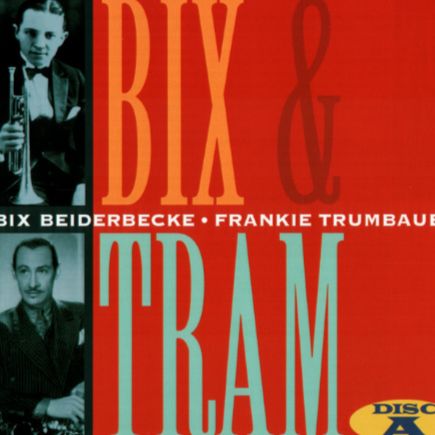I’m Coming Virginia: une ballade fondatrice entre tradition et modernité
Composée en 1926 par Donald Heywood, sur des paroles de Will Marion Cook, I’m Coming Virginia s’est rapidement imposée comme un classique du répertoire jazz. Popularisée cette même année par Ethel Waters lors d’un enregistrement marquant avec le Will Marion Cook’s Singing Orchestra.
La chanson apparaît dans la revue Africana, à Broadway. Ce succès initial ancre le morceau dans l’univers des ballades lyriques, mais son destin va très vite dépasser le cadre du music-hall.
Adoptée par les musiciens de style Dixieland, I’m Coming Virginia subit un changement de tempo et d’esthétique. Elle devient un terrain d’expression privilégié pour les solistes des années 1920 et 1930, qui y voient une occasion d’allier lyrisme, swing et liberté d’improvisation. Sa structure harmonique souple et sa mélodie fluide offrent un cadre riche aux interprétations contrastées : de la douceur intime à l’élan virtuose.
Lyrisme à deux voix avec Beiderbecke et Trumbauer
Parmi les interprétations marquantes, celle du 13 mai 1927 enregistrée par le trompettiste Bix Beiderbecke avec l’orchestre du saxophoniste Frankie Trumbauer se distingue par sa grâce et sa profondeur. Inclus dans la collection Bix and Tram — qui rassemble 81 titres enregistrés par le duo, ainsi que des pièces issues des sessions de Bix & His Gang et d’enregistrements rares de 1924 à 1934 —, I’m Coming Virginia témoigne d’un moment charnière de l’histoire du jazz, où les frontières stylistiques se déplacent et se redéfinissent sans cesse.
L’alchimie entre Bix Beiderbecke et Frankie Trumbauer y atteint une rare intensité. Tandis que le jazz de l’époque est dominé par la virtuosité explosive de Louis Armstrong, Beiderbecke adopte un phrasé legato, un toucher feutré, une expressivité contenue mais bouleversante. Son jeu annonce déjà, en creux, les sensibilités du cool jazz.
De son côté, Trumbauer, au saxophone C-melody, privilégie les lignes claires, les harmonies raffinées et une construction musicale d’une grande élégance. Son approche, influencée par la musique orchestrale et les innovations harmoniques venues de la Nouvelle-Orléans, contribue à élargir les contours du jazz.
I’m Coming Virginia: una balada fundacional entre tradición y modernidad
Compuesta en 1926 por Donald Heywood, con letra de Will Marion Cook, I’m Coming Virginia se impuso rápidamente como un clásico del repertorio jazzístico. Ese mismo año fue popularizada por Ethel Waters en una grabación emblemática junto a la Will Marion Cook’s Singing Orchestra.
La canción apareció en la revista Africana, representada en Broadway. Este éxito inicial consolidó la pieza en el universo de las baladas líricas, pero su destino pronto superó el ámbito del music-hall.
Adoptada por los músicos del estilo Dixieland, I’m Coming Virginia sufrió una transformación tanto en tempo como en estética. Se convirtió en un terreno de expresión ideal para los solistas de las décadas de 1920 y 1930, que encontraron en ella una oportunidad para combinar lirismo, swing y libertad improvisativa. Su estructura armónica flexible y su melodía fluida ofrecían un marco fértil para interpretaciones muy diversas, desde la ternura íntima hasta el virtuosismo exuberante.
Lirismo a dos voces con Beiderbecke y Trumbauer
Entre las interpretaciones más notables, destaca la grabación del 13 de mayo de 1927 por el trompetista Bix Beiderbecke con la orquesta del saxofonista Frankie Trumbauer. Incluida en la colección Bix and Tram —que reúne 81 temas del dúo, junto a grabaciones de Bix & His Gang y otras sesiones raras de entre 1924 y 1934—, I’m Coming Virginia refleja una etapa crucial en la historia del jazz, cuando las fronteras estilísticas estaban en plena transformación.
La química entre Bix Beiderbecke y Frankie Trumbauer alcanza aquí una intensidad poco común. Mientras el jazz de la época estaba dominado por la energía desbordante de Louis Armstrong, Beiderbecke adopta un fraseo legato, un sonido aterciopelado y una expresividad contenida pero profundamente emotiva. Su enfoque anticipa, en cierto modo, las sensibilidades del cool jazz.
Trumbauer, con su saxofón C-melody, opta por líneas claras, armonías refinadas y una arquitectura sonora de gran elegancia. Influenciado por la música orquestal y las innovaciones de Nueva Orleans, su estilo contribuye a ampliar los horizontes del jazz.
I’m Coming Virginia: una ballata fondatrice tra tradizione e modernità
Composta nel 1926 da Donald Heywood, con testo di Will Marion Cook, I’m Coming Virginia si è affermata rapidamente come un classico del repertorio jazz. Nello stesso anno venne resa celebre da Ethel Waters grazie a una registrazione significativa con la Will Marion Cook’s Singing Orchestra.
La canzone apparve nella rivista Africana, in scena a Broadway. Questo successo iniziale la consacrò nel mondo delle ballate liriche, ma il suo percorso andò ben oltre il music-hall.
Accolta dai musicisti dello stile Dixieland, I’m Coming Virginia subì un cambiamento nel tempo e nell’estetica. Divenne un terreno d’espressione privilegiato per i solisti degli anni Venti e Trenta, che vi trovarono l’occasione per fondere lirismo, swing e libertà improvvisativa. La sua struttura armonica flessibile e la melodia fluida offrivano un quadro ricco per interpretazioni contrastanti: dalla dolcezza intima al virtuosismo più impetuoso.
Lirismo a due voci con Beiderbecke e Trumbauer
Tra le versioni più memorabili, spicca quella incisa il 13 maggio 1927 dal trombettista Bix Beiderbecke con l’orchestra del sassofonista Frankie Trumbauer. Inclusa nella raccolta Bix and Tram —che riunisce 81 brani del duo, insieme a registrazioni di Bix & His Gang e a rarità datate tra il 1924 e il 1934—, I’m Coming Virginia testimonia una fase decisiva della storia del jazz, in cui gli stili si rimescolano e si ridefiniscono costantemente.
L’intesa musicale tra Bix Beiderbecke e Frankie Trumbauer raggiunge qui una rara profondità. Mentre il jazz dell’epoca è dominato dal virtuosismo travolgente di Louis Armstrong, Beiderbecke adotta un fraseggio legato, un tocco morbido e un lirismo introspettivo. Il suo stile, discreto ma intensamente espressivo, prefigura l’estetica del cool jazz.
Trumbauer, con il suo sax C-melody, si distingue per la linearità melodica, la raffinatezza armonica e un’impostazione musicale elegante, ispirata tanto alla musica orchestrale quanto alle innovazioni nate a New Orleans.
I’m Coming Virginia: a foundational ballad between tradition and modernity
Composed in 1926 by Donald Heywood with lyrics by Will Marion Cook, I’m Coming Virginia quickly established itself as a jazz repertoire classic. That same year, it was popularized by Ethel Waters in a landmark recording with the Will Marion Cook’s Singing Orchestra.
The song featured in the Broadway revue Africana, and this early success anchored it within the world of lyrical ballads — but its trajectory would soon extend far beyond the music hall.
Embraced by Dixieland musicians, I’m Coming Virginia underwent changes in tempo and style. It became a favored vehicle for soloists of the 1920s and 1930s, who saw in it a space to merge lyricism, swing, and improvisational freedom. Its flexible harmonic structure and flowing melody offered fertile ground for diverse interpretations — from intimate tenderness to soaring virtuosity.
Two-voice lyricism with Beiderbecke and Trumbauer
Among the most notable interpretations is the one recorded on May 13, 1927, by trumpeter Bix Beiderbecke with saxophonist Frankie Trumbauer’s orchestra. Featured in the Bix and Tram collection — comprising 81 tracks by the duo, along with sessions from Bix & His Gang and rare recordings spanning 1924 to 1934 — I’m Coming Virginia reflects a pivotal moment in jazz history, when stylistic boundaries were shifting and evolving.
The musical chemistry between Bix Beiderbecke and Frankie Trumbauer reaches exceptional depth here. While the jazz of the era was largely defined by the explosive brilliance of Louis Armstrong, Beiderbecke favored legato phrasing, a soft touch, and a restrained yet profoundly emotional lyricism. His approach subtly foreshadows the aesthetics of cool jazz.
Trumbauer, playing the C-melody saxophone, emphasizes clean melodic lines, refined harmonies, and a graceful musical structure. Influenced by orchestral traditions and harmonic innovations from New Orleans, his style helped expand jazz’s expressive range.


